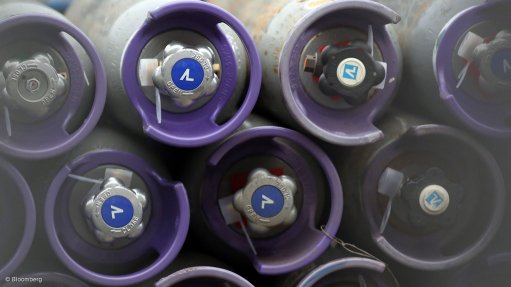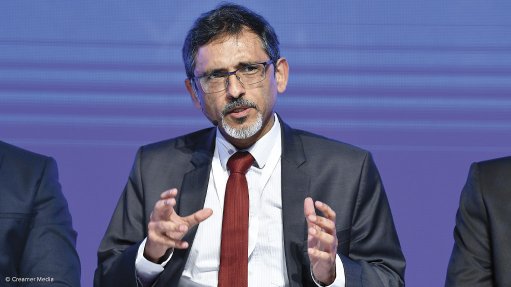Big Namibia highway projects to improve regional integration
The Trans-Kalahari Highway is about to experience a massive investment of about N$1.3-billion with the creation of Route 301, linking Gobabis directly with Grootfontein, enhancing the Trans-Caprivi Highway at the same time.
The Roads Authority of Namibia (RAN) says the upgrading of Trunk Road 14/2 is identified as the extension of the Trans-Kalahari Highway linking the northern regions of Namibia and the southern regions of Angola with the markets of Botswana and South Africa.
“The link has been designated Route 301 of the Southern African Development Community regional trunk network and aims to provide a link for the mass transport of tradable goods,” says the RAN.
The new route will cut about 300 km from the total distance travelled from Johannesburg through Botswana to northern Namibia and will make it an attractive option for the transportation of goods – in both directions.
The section between Gobabis and Otjinene has been completed by the Basil Read and Genesis joint venture under the supervision of Windhoek Consulting Engineers. Work started in November 2009 and was completed in August 2012. The total distance is 157 km and the total cost was N$377-million.
The next phase, from Otjinene to Groot- fontein, represents a greater challenge as it is not only longer, but also requires more infrastruc- ture than Phase 1. A consortium comprising Element Consulting Engineers, Bicon Namibia, Engelbrecht Consulting Engineers and WML Consulting Engineers was appointed in January to design and supervise the upgrade and construction of Phase 2.
According to the consortium’s project engineer, Braam Cilliers, three routes were originally looked at and the final route settled is 230.6 km long.
“The link from Otjinene to Grootfontein entails the upgrade of certain gravel sections and the new construction of others. The second phase will be rolled out in two sections. The first has an existing alignment of 74 km, with 56.7 km being newly constructed. It runs from Otjinene to Okamatapati. The second section has an existing alignment of 42.9 km, with 57 km being constructed from scratch, running from Okamatapati to Grootfontein.”
This phase is currently estimated to cost N$877-million, but Cilliers says, once the contractors are appointed toward the end of 2013 or in early 2014, the cost could increase to around N$1-billion.
According to Cilliers, there have been some challenges to this route. “Once the final route was agreed on, a process which had its own set of challenges to balance everyone’s needs, we needed to source the materials to construct the road. A large portion runs through the Kalahari dune sea, which is between 5 m and 150 m deep. This acts as a collapsing structure, so we need to compact the road bed properly to avoid settling over time, in particular taking into account the high volumes of truck traffic that the route will carry.
“We have managed to source good-quality calcrete in the area but the crushing and screening of this is critical to ensure that the stabilisation of the road and its pavement layer is of the highest quality.”
Cilliers says that water may also present a challenge. There is a large Namwater pipeline that runs through the bottom third section of the new route but there are vast areas which are communally owned and have no water infra- structure. Once commercial farmland is entered, however, boreholes will be available.
“We have appointed a hydrogeologist to look at the water situation and find solutions. We have found strong water at Coblenz, two-thirds of the way through.”
Once the route connects to Grootfontein, an interchange will be constructed.
“There is a railway line around 30 m from the road and, owing to this, we have to construct a proper flyover, bypassing the town. There is not enough space to bridge the railway line and bring the road back onto level.”
Currently, Element is busy with technical investigations, infrastructural challenges and the completion of the environmental-impact assessment. Work should start in 2014 and will take between four and five years to complete.
“The two sections will run separately but there may be an overlap of around a year. Each of the sections will take around 30 months to complete,” says Cilliers.
Namibia is recognised as having the best road infrastructure in the SADC region and this investment will go a long way towards supporting that view. It will enhance regional trade and boost the corridor to the north of Namibia as well as Angola, Zambia and the DRC. The secondary spin-offs for those along the route will also be extensive.
Says Walvis Bay Corridor Group CEO Johny Smith: “This is an alternative transport route that will serve mainly imports for Angola through Botswana and Namibia from South Africa. Part of Namibia’s strategy has been to develop alternative trade routes since inde- pendence. As a country, we cannot just rely on one option. This route would also cut the transit time between South Africa and the northern parts of Namibia by more than 300 kilometers.”
Comments
Announcements
What's On
Subscribe to improve your user experience...
Option 1 (equivalent of R125 a month):
Receive a weekly copy of Creamer Media's Engineering News & Mining Weekly magazine
(print copy for those in South Africa and e-magazine for those outside of South Africa)
Receive daily email newsletters
Access to full search results
Access archive of magazine back copies
Access to Projects in Progress
Access to ONE Research Report of your choice in PDF format
Option 2 (equivalent of R375 a month):
All benefits from Option 1
PLUS
Access to Creamer Media's Research Channel Africa for ALL Research Reports, in PDF format, on various industrial and mining sectors
including Electricity; Water; Energy Transition; Hydrogen; Roads, Rail and Ports; Coal; Gold; Platinum; Battery Metals; etc.
Already a subscriber?
Forgotten your password?
Receive weekly copy of Creamer Media's Engineering News & Mining Weekly magazine (print copy for those in South Africa and e-magazine for those outside of South Africa)
➕
Recieve daily email newsletters
➕
Access to full search results
➕
Access archive of magazine back copies
➕
Access to Projects in Progress
➕
Access to ONE Research Report of your choice in PDF format
RESEARCH CHANNEL AFRICA
R4500 (equivalent of R375 a month)
SUBSCRIBEAll benefits from Option 1
➕
Access to Creamer Media's Research Channel Africa for ALL Research Reports on various industrial and mining sectors, in PDF format, including on:
Electricity
➕
Water
➕
Energy Transition
➕
Hydrogen
➕
Roads, Rail and Ports
➕
Coal
➕
Gold
➕
Platinum
➕
Battery Metals
➕
etc.
Receive all benefits from Option 1 or Option 2 delivered to numerous people at your company
➕
Multiple User names and Passwords for simultaneous log-ins
➕
Intranet integration access to all in your organisation


















